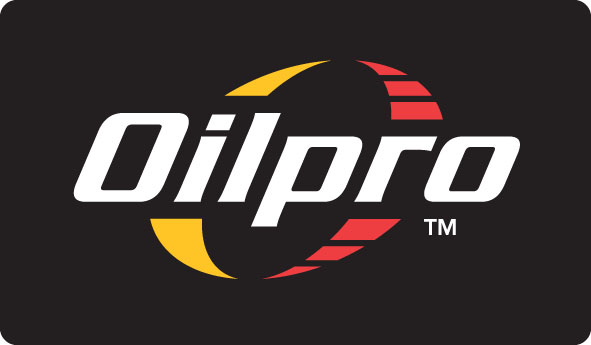The good oil
02 July 2014
Myth 1: You can tell the condition of an oil by its look, smell and color. If it turns dark or goes black quickly, it’s not good.
Nothing could be further from the truth. If an oil is doing its job cleaning the engine, then it will be dirty when it is drained. In the case of diesel engines, the oil may look dirty within a few hours of operation. This indicates that the motor oil is keeping soot, dirt and other combustion contaminants in suspension. These will then be carried to the filter or removed from the crankcase when the oil and filter are changed. Good quality motor oils are formulated to hold these contaminants in suspension until the oil is drained when the oil and filter are changed.
However, that doesn't mean you never change the oil! There is a certain point where the oil won't hold the dirt anymore, and that's when you can run into problems. If you never change the oil, or leave it too long, the contaminants will separate and get left behind in your engine as deposits or sludge. Good quality oil, such as OilPro, along with regular oil and filter changes will prevent this from occurring.
So when should you change your oil? Although some European vehicle manufacturers recommend only changing the oil every two years, this guideline is usually based on the vehicle being in its warranty period and being driven under European conditions. At Powerhaus, our recommended best practice is to change your oil at least every 12 months or 10,000 km - whichever comes first - to ensure the longevity of your vehicle's engine under New Zealand conditions.
Not sure when it was last changed? Talk to the team at Powerhaus: they'll weigh up a number of factors including the time and mileage since your last oil change, the appearance of the oil and the manufacturer's recommendations for your particular model of car - and then they'll give you their expert recommendation.
Myth 2: The "W" in 10W-30 oil stands for "weight"
Not true. The 'W' actually stands for 'winter'. Let us explain.
When you buy engine oil, it's important to know the oil's viscosity, a property that corresponds roughly to its thickness. The less viscous the oil, the more smoothly it moves through your engine and lubricates the moving parts. The best engine oils have a viscosity that is neither so high (thick) that it will barely flow or so low (thin) that it will slip through your engine like water.
There are two ways in which oil viscosity is measured - single grade and multi-grade. SAE 30 is a typical single-grade rating. That means that an organisation called the Society of Automotive Engineers (SAE) ran the oil through a standardised tube-like device and timed how long it took, in seconds, to flow from one end to the other. The viscosity rating is the number of seconds rounded to the nearest multiple of ten. Therefore, SAE 30 oil takes approximately 30 seconds to flow through the tube. This single viscosity rating is sometimes called the oil's 'weight.'
However, oil changes its viscosity with temperature and the single viscosity rating only represents the flow of oil when it's warm. So what if you need to start your car on a freezing cold morning? The oil will flow more slowly, so the cold viscosity rating is important too. A multi-grade rating gives you both the hot and cold viscosities. For 10W-30 oil, the 30 is the same as the SAE 30 viscosity rating for warm oil, but the 10W is the viscosity rating for cold oil, according to a standardised rating system developed by the SAE for winter oil use (and hence the 'W').
Myth 3: Thicker motor oil is better for your engine and increases engine life.
Nope. The main reason vehicle manufacturers recommend thinner or lighter viscosity grades of engine oil is to try and improve fuel economy. Lower viscosity oils may help reduce internal engine friction. As a result, it takes less energy to pump the thinner oil throughout the small passages inside an engine. Thinner motor oil is also essential for easy starting, particularly in cold weather and for good lubrication once the engine starts. Thinner oils, such as SAE 5W-30, will flow faster than heavier motor oils during start-up and initial engine operation helping to protect the engine. The viscosity grade(s) recommended by the vehicle manufacturer depend somewhat on engine design. Engine manufacturers have spent considerable time and expense experimenting with different viscosity grades. The owner’s manual indicates the grades they feel will best protect the engine at specific temperatures.While one manufacturer’s engine may require an SAE 10W-40, another manufacturer’s engine may require a SAE 5W-30 viscosity grade. This is likely due to different tolerances within the engine, field test experience or other engine design factors.
Myth 4: I think the engine oil I'm using is good enough because I haven't had any problem with my engine. So there's no need for me to pay extra money for higher quality engine oil.
Wrong again! You may or may not be able to see the impact of inferior quality oils right away. In a seemingly well-peforming engine, harmful contaminants may already have entered the engine's lubricating system and begun to cause corrosion, rust, wear, etc. Just because you haven't experienced any symptoms doesn't mean problems don't exist. When problems do become visible, it may be too late or very costly to bring the engine's performance back to normal. It's always advisable to stick to a high quality, warranty-backed brand for maximum protection, e.g. OilPro.
Myth 5: Synthetic engine oil is only for new engines or vehicles.
Quality synthetic engine oil can be used in old as well as new cars including vehicles in which conventional oil was previously used. Synthetic engine oils are beneficial for the good health, long life and top performance of new or old cars.

